Ingestion
1/30
Earn XP
Description and Tags
Name | Mastery | Learn | Test | Matching | Spaced |
|---|
No study sessions yet.
31 Terms
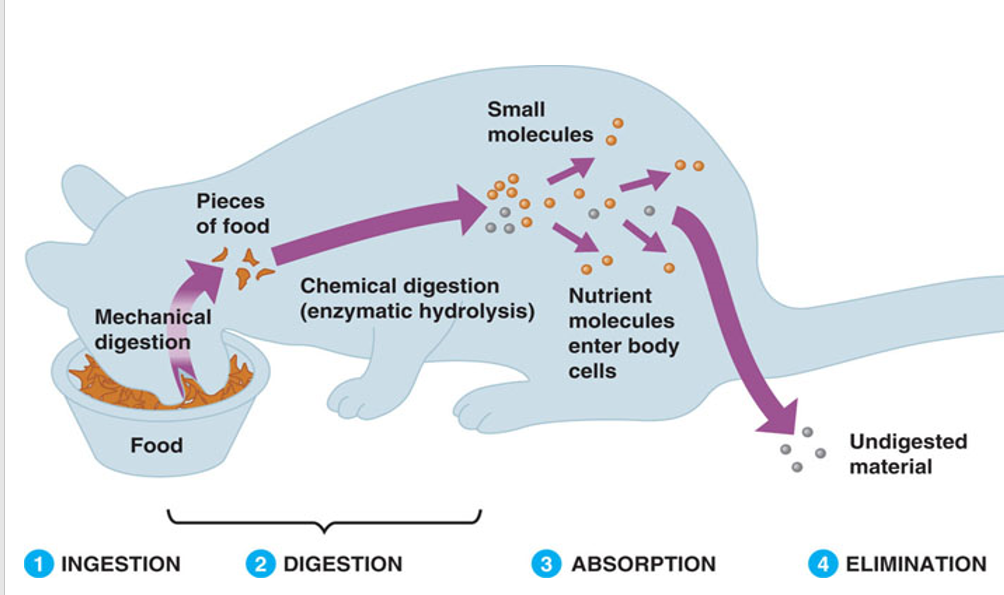
Ingestion
Taking in nutrients
Digestion
Breakdown of nutrients
Types of digestion
Chemical (enzyme) digestion
Mechanical -
Absorption
Transportation of digested nutrients via blood
Elimination
Removal of undigested waste
Length of human digestive tract
6.5-9m long
Where does digestion begin?
Digestion begins in the mouth where food is chewed to form a bolus.
-Physical (mechanical) digestion

Hardest substance in the body
Enamel which covers the teeth.
Amylase
An enzyme that breaks down carbohydrates in the digestive system.
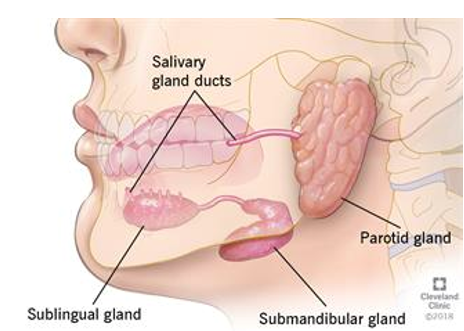
Saliva
Has 2 functions:
1. Has salivary amylase enzymes
2. Dissolves food particles.
-Lubricates foods, flavor receptors.
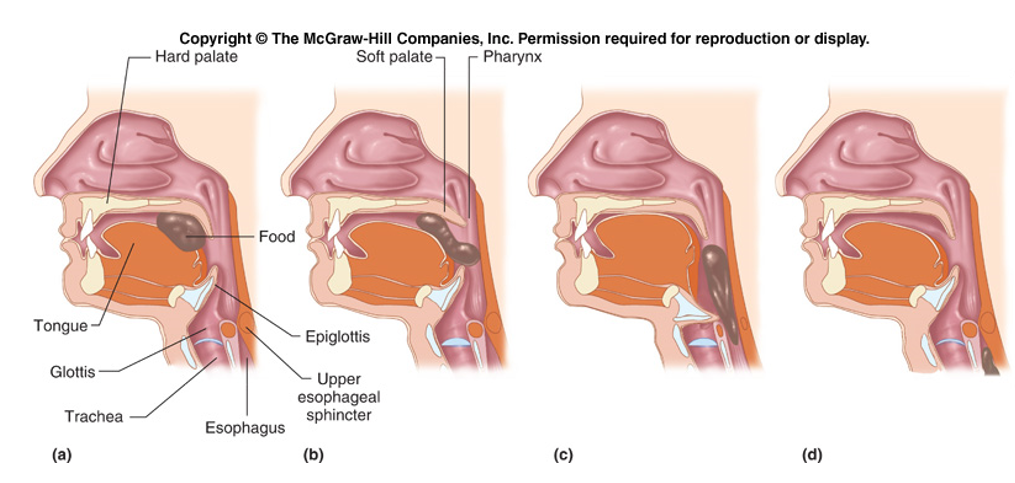
Swallowing Reflex
Triggered by food in pharynx
Contractions coordinated by Medulla
Medulla
Part of the brainstem that controls vital functions like breathing.
Esophagus
The tube from mouth to stomach
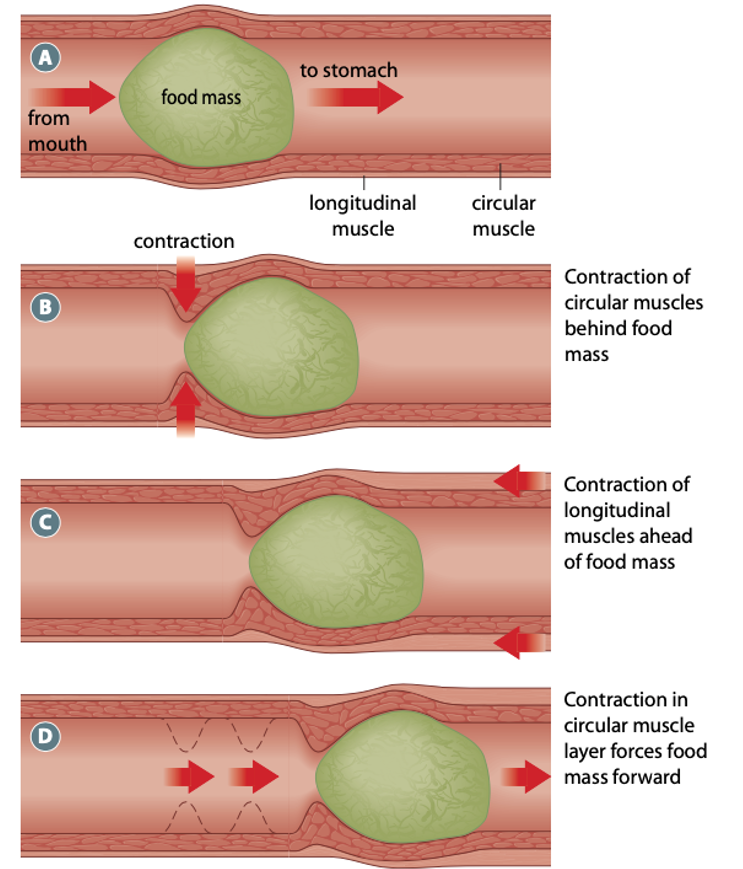
When a food bolus enters the esophagus:
Walls of the esophagus stretch
2. Peristalsis: smooth muscle that lines the esophagus, and involuntarily contracts to help move food down.
Esophageal Sphincter
A ring-like muscular structure which controls the entry to food entering your stomach.
What is the esophagus separated by?
Gastroesophageal (cardiac) sphincter or valve.

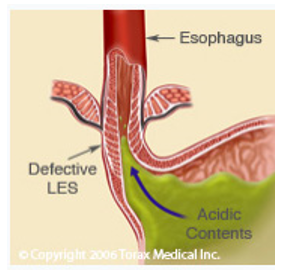
What is the result of a faulty valve?
Heart Burn
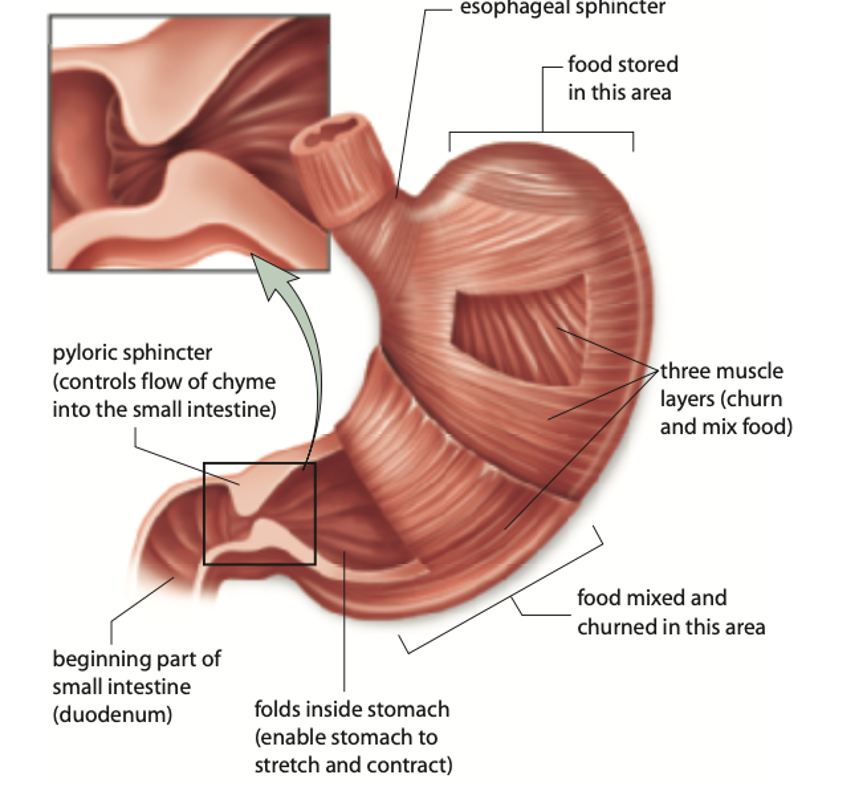
Stomach
-J shaped organ
-Site of food storage and initial protein digestion
-Folded layers to increase surface area
-Physically digests food through the churning motion from stomach muscles.
PH of the Stomach
1.0-3.0 (acidic)
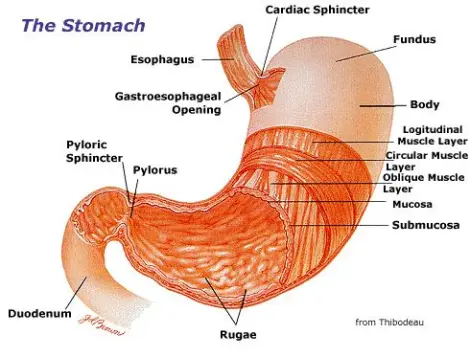
Pyloric sphincter
Controls the emptying of stomach contents into the small intestine.
Stomach Secretion
Flashcard: "Stomach Secretion"
Process of releasing digestive fluids in the stomach
Includes hydrochloric acid, enzymes, and mucus
Aids in breaking down food and killing bacteria
Autocatalysis
A chemical reaction that speeds up due to the presence of its own product. It acts as a catalyst for its own formation, leading to an exponential increase in the reaction rate.
Pepsinogen (chief cells)
It is the inactive form of pepsin, an enzyme that helps break down proteins during digestion.
Chemical reaction of pepsinogen and HCL
The process where pepsinogen and HCl combine to form pepsin. Pepsinogen, an inactive enzyme, is activated by HCl in the stomach. Pepsin then breaks down proteins into smaller peptides. This chemical reaction aids in the digestion of food in the stomach.
-Stomach pH can drop to 2-3
Common stomach problems
Gastritis
Peptic ulcers
Gastritis
A stomach problem due to inflammation of the tissue, can be caused due to aspirin and alcohol.
Peptic ulcers
The mucous later in the stomach breaks down
-Stomach acid makes contact with the stomach wall causing holes, and acid burns.
Caused by bacteria, and diet and stress.
Ulcers
Most commonly caused by a Helicobacter pylori infection.
-Long period of NSAIDS for example advil.
Gastric Juices
Flashcard: Gastric Juices
Secreted by the stomach lining
Contains hydrochloric acid, pepsinogen, and mucus
Helps break down food and kill bacteria
Acidic pH aids in digestion and activates pepsinogen to pepsin
Mucus protects stomach lining from acid damage
Chyme
Chyme: Partially digested food mixed with gastric juices in the stomach. It is a thick, soupy substance that moves from the stomach to the small intestine for further digestion and absorption of nutrients.

White tee
Treat me like white tees (treat me like white tees)
Don't get me dirty (don't get me dirty)
Love, love, love on me (love, love, love on me)
Love on, love on me (love on, love on me)